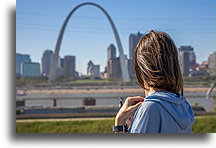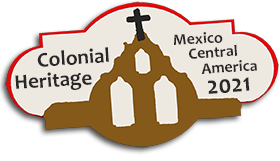Crossing the USA
October 8-10
We had driven through the US several times before as fast as possible to reach the Mexican border. Two days of murderous 2,000-mile drive. This time we decided to do it differently. We chose a slightly longer route and decided to visit some interesting places along the way.
We hit the road at 9 PM. After driving overnight and some short sleep in the interstate’s rest area we found ourselves in Dayton, Ohio. The first stop was to visit National Museum of the US Air Force, probably world’s largest military aviation museum. We were here mainly to see Air Force One, a Boeing plane that carried eight sitting US presidents. This plane is remembered mainly because it carried president Kennedy to Dallas, Texas just before his assassination. The same plane also transported the coffin with his body back to Washington.


It turned out that the museum is really big and shows the whole history of military aviation. There are many planes, from the reconstruction of the first military flying machine, the Wright 1909 Military Flyer, to supersonic spy planes from the Cold War. One of the more unusual exhibits is the Bockscar, the B-29 Superfortress, the plane that dropped an atomic bomb on Nagasaki.


The following day we stopped to see Cahokia Mounds in Illinois. Pyramids and other stone structure are characteristics of Mesoamerica, region that stretches from Central Mexico in the north to Honduras and El Salvador in the south. There are no pyramids in North America outside of this region, but there are earthen mounds. Cahokia is considered the largest and most complex pre-Columbian settlement in today’s USA and Canada and contains the largest prehistoric mound.



The Mississippian culture raised many communities along the Mississippi River. Cahokia is considered the largest. It dates from AD 700. It is estimated that at its peak, around AD 1050, 10 to 20,000 people lived here. Cahokia was a chiefdom, ceremonial and trade site. The heart of the community was the Grand Plaza. It was a place of public gatherings where the leader could address masses from the largest mound. The top of the Monks Mound was a place from where the paramount chief governed Cahokia and the surroundings region. The Grand Plaza as a sacred place was surrounded by a Stockdale wall. The elite lived inside, the rest of the inhabitants outside the wall. Around 1400 Cahokia was abandoned.



Our next stop was Cathedral Basilica of Saint Louis, known for its large mosaic installation. We were very impressed with the interior of the church. Mosaics are everywhere. They depict not only biblical scenes and important archdiocesan events, but also the life of King Louis IX of France, the namesake of the city. One of the largest collection of mosaics in the Western Hemisphere contains over 40 million glass tesserae pieces in more than 7,000 colors.



All mosaics of the Saint Louis Cathedral are Byzantine style, with the exception of two Italian style chapels. The difference between the two styles of mosaics is in the tesserae material. The Byzantine are made of colored glass. The glass tesserae reflect light. Italian mosaics are usually made of marble tiles that lack the reflection. However, the Italian-style mosaics from Saint Louis Cathedral were produced and installed by Tiffany. This company chose not to use marble, but simi-opaque glass tesserae to imitate marble.









